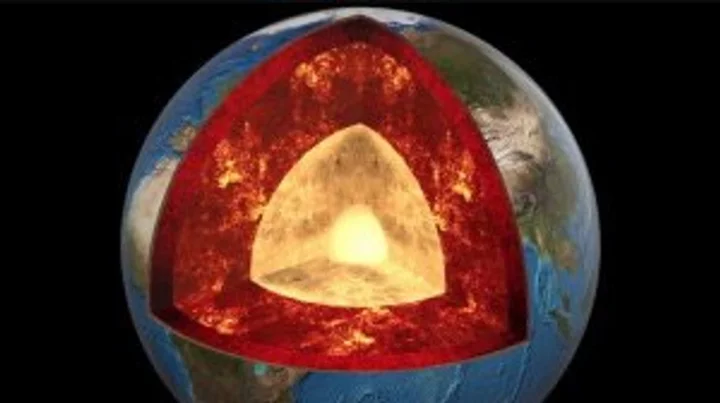
Fearless, Solid and Reliable, DONGFENG KC Ushers a New Journey in the World
WUHAN, China--(BUSINESS WIRE)--Oct 23, 2023--
1970-01-01 08:00

Production woes plague earnings for Boeing, RTX and Spirit Aero
By Valerie Insinna and Pratyush Thakur WASHINGTON After a succession of production snafus, investors will question whether U.S.
1970-01-01 08:00

Markets juggle 5% yields and 150 yen
A look at the day ahead in U.S. and global markets from Mike Dolan Partly unwinding pre-weekend safety hedges related
1970-01-01 08:00

New HORTECA Facility Showcases Sollum Technologies’ Dynamic Grow Light Solution
MONTRÉAL--(BUSINESS WIRE)--Oct 23, 2023--
1970-01-01 08:00

UAW's confrontational leader makes gains in strike talks, but some wonder: Has he reached too far?
Throughout its 5-week-old strikes against Detroit’s automakers, the United Auto Workers union has cast an emphatically combative stance, reflecting the style of its pugnacious leader, Shawn Fain
1970-01-01 08:00

Sri Lanka inflation rate eases to 0.8% in Sept vs 2.1% in Aug
COLOMBO Sri Lanka's consumer price inflation rate eased to 0.8% year-on-year in September from 2.1% in August, the
1970-01-01 08:00

Chevron to buy Hess Corp for $53 billion in all-stock deal
(Reuters) -Chevron Corp said on Monday it will buy smaller rival Hess Corp in a $53-billion all-stock deal. Chevron is
1970-01-01 08:00

Scientists baffled after discovering that the Earth's core is 'leaking'
The name “core” suggests something hard and fixed but, it turns out, the Earth’s core is leaking. That is, at least, according to a team of top scientists, who drew the conclusion after analysing 62-million-old Arctic rocks. Geochemists from the California Institute of Technology and Woods Hole Oceanographic Institution detected record concentrations of helium 3 (3He) and helium 4 (4He) isotopes in the rocks, which suggest a slow trickle up from the very heart of our planet. They believe there could be reserves of the elusive gas buried some 2,900km underground. Helium is a surprisingly rare element on the Earth’s surface and experts have yet to establish just how much of it remains trapped deep beneath our feet. However, the new discovery has provided them with a fresh insight into the most mysterious region of our world. Understanding the presence of these helium isotopes could illuminate key processes in the core, such as how the Earth generated its life-protecting magnetic field. Most helium in the universe dates back to the Big Bang which occurred 13.8 billion years ago. The Earth swallowed up some of this as an infant planet, but mostly burped it all away during its 4.6 billion-year-long formation, as Science Alert reports. This means that any traces of helium found in volcanic rock – such as the samples unearthed in the Arctic – are believed to come either from pockets of mantle that are yet to release their helium, or from a vast, slow-leaking reserve. Basaltic lavas on Canada's Baffin Island contain some of the world's highest ratios of 3He to 4He, which geologists believe indicates that the gas's presence is not to do with the atmosphere, but rather the sign of deeper terrestrial origins. Several years ago, geochemist Forrest Horton uncovered helium isotope ratios of up to 50 times that of atmospheric levels in samples collected from Baffin's lava fields. This unusual concentration was also detected in lavas collected from Iceland. Horton and his team wondered if the helium in both samples may have derived from an ancient reservoir deep within the crust. And, it seems, their hunch may have been right. Their latest analysis – including specimens of the mineral olivine taken from dozens of sites across Baffin and surrounding islands – has delivered the highest ratio of 3He to 4He ever recorded in volcanic rock – measuring nearly 70 times anything previously detected in the atmosphere, as Science Alert notes. The team also considered ratios of other isotopes in order to rule out factors that may have altered the helium’s composition post-volcanic eruption, and found that the ratio of isotopes in the gas neon also matched the conditions present during the Earth’s formation. Despite advances in geology, the Earth’s core remains a great mystery, given that we have no way of directly exploring its core. The deepest hole humans have ever dug – branded the "entrance to hell" – extended an impressive 12,263m (40,230ft) down, but even that doesn’t come close to breaking through the crust to the layers beneath. Still, thanks to techniques like seismic tomography – which analyses how waves of energy travel through different materials during earthquakes – we’ve been able to map out the world’s interior. And carefully crafted simulations, based on the thermodynamics and pressures of our planet’s innards, suggest reserves of noble gases (like helium and neon) trapped in the core could have been protected as the Earth grew before seeping into the surrounding mantle over time. If the core is leaking, this could teach us a thing or two about how planets like ours form and how life, eventually, emerges. Sign up for our free Indy100 weekly newsletter Have your say in our news democracy. Click the upvote icon at the top of the page to help raise this article through the indy100 rankings
1970-01-01 08:00

President Joe Biden is naming 'tech hubs' for 32 states, Puerto Rico to help industry, create jobs
The Biden administration is designating 31 so-called tech hubs that reach 32 states and Puerto Rico
1970-01-01 08:00

Biden administration picks 31 regional tech hubs to spur US innovation
By David Shepardson WASHINGTON The U.S. Commerce Department said on Monday it was naming 31 regional tech hubs
1970-01-01 08:00

SpaceX signs deal to launch key European satellites - WSJ
SpaceX has signed a deal to launch up to four of Europe's flagship navigation and secure communications satellites
1970-01-01 08:00

Current and ex-employees at WPP-owned media agency detained in China - sources
By Casey Hall and Laurie Chen SHANGHAI (This Oct. 21 story has been corrected to fix the reference
1970-01-01 08:00
